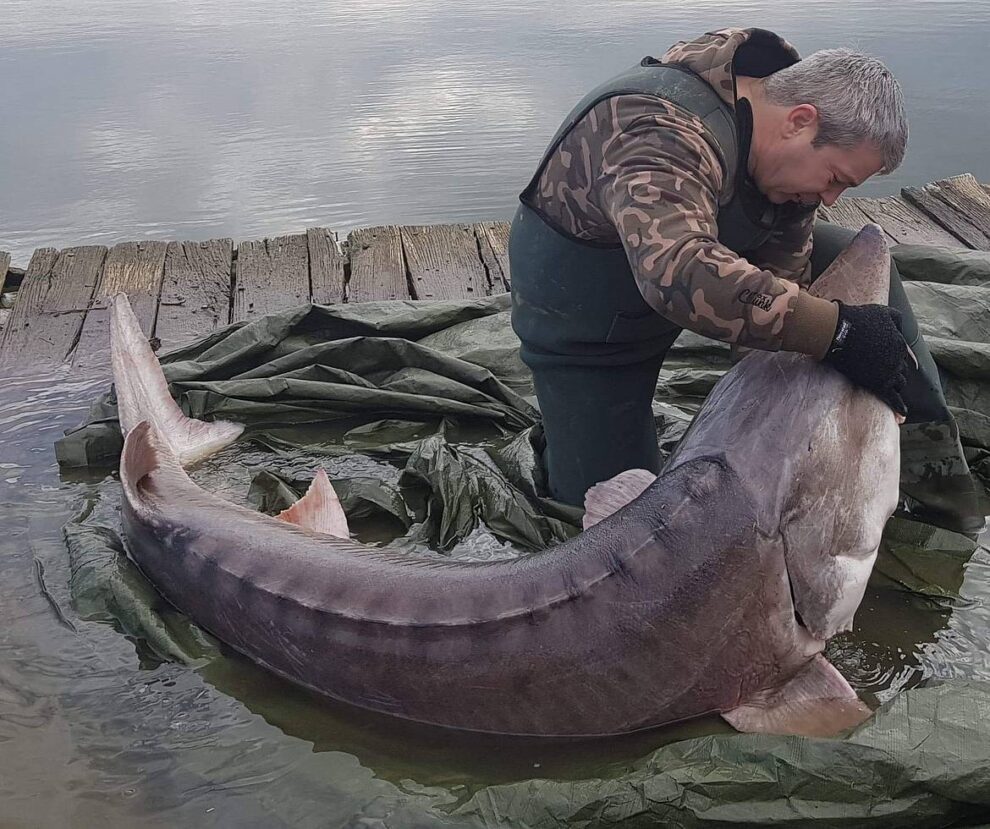Around half of the commercially available caviar products in four Southeast European countries are illegal, according to a new study based on widespread sampling of caviar and sturgeon products sold in the region.
In Europe, the Danube River and the Black Sea are home to the last remaining wild populations of four sturgeon species — Beluga, Russian, stellate and sterlet — all protected under the Convention on International Trade in Endangered Species of Wild Fauna and Flora (CITES) since 1998. The Danube sturgeon populations face a significant threat due from poaching. Despite the international labeling system introduced in 2000 to combat illegal trade, researchers found evidence of ongoing poaching based on local accounts.
Wild caviar, a culinary treat derived from sturgeon roe, has been prohibited for years due to the threat of extinction posed by rampant poaching. Presently, legally traded caviar must originate from sturgeon farms, with stringent regulations in place to safeguard the species.
However, an examination of caviar samples from Bulgaria, Romania, Serbia and Ukraine, conducted by a team of sturgeon experts from the Leibniz-Institute for Zoo & Wildlife Research, reveals a troubling violation of these regulations in a study published on November 20 in the journal Current Biology.
“Our results indicate an ongoing demand for wild sturgeon products, which is alarming, since these products endanger wild sturgeon populations,” wrote the researchers.
“The persistent demand fuels poaching and indicates that consumers do not fully accept aquaculture products as a substitute. In addition, caviar being sold in violation of CITES and EU obligations questions the effectiveness of controls in general and the labeling system in particular.”
The research team led by Arne Ludwig from the Leibniz-Institute for Zoo & Wildlife Research traced the origin of caviar products from native sturgeon regions, taking samples from various sources, including online platforms, local markets, shops, restaurants, bars and aquaculture facilities. A total of 149 samples of caviar and sturgeon meat were collected and analysed.
Genetic and isotope analyses revealed that 21% of the samples came from wild-caught sturgeons, sold across the studied countries. Additionally, 29% of the samples violated CITES regulations and trade laws, including mislabeling of species or country of origin. Another 32% were categorised as “customer deception”, falsely declared as wild products but originating from aquaculture.
“Our results indicate an ongoing demand for wild sturgeon products, which is alarming, since these products endanger wild sturgeon populations,” said Jutta Jahrl, manager of the Life for Danube Sturgeons project at WWF Austria, according to a press release from the Leibniz-Institute.
“The persistent demand fuels poaching and indicates that consumers do not fully accept aquaculture products as a substitute. In addition, caviar being sold in violation of CITES and EU obligations questions the effectiveness of controls in general and the labelling system in particular.”
The study also found that some products did not contain caviar or sturgeon at all. A dish sold as ‘sturgeon soup’ in Romania was made of European catfish and Nile perch.
The researchers suggest that the substantial illegal poaching may result from inadequate income opportunities for local seafood vendors, coupled with a potential lack of effective law enforcement in these regions.
The authors called for prompt action to address the persistent demand for wild sturgeon products, which fuels poaching and questions the effectiveness of current controls and labeling systems. They stressed the urgency of improving the regulation of caviar and sturgeon trade in the European Union and candidate member states to ensure the survival of Danube sturgeon populations.
Source : Intellinews











